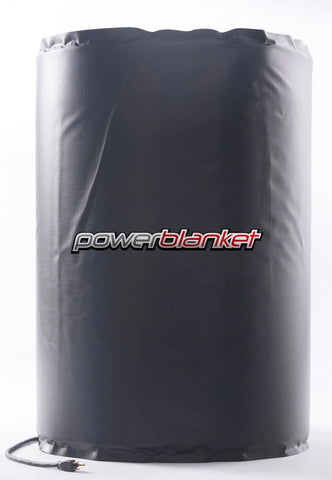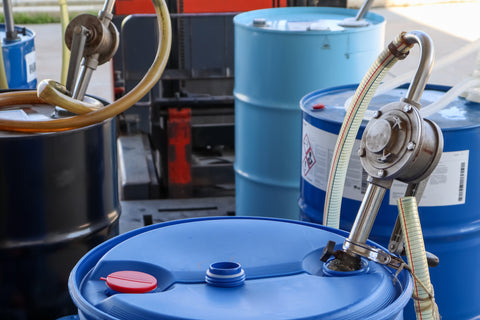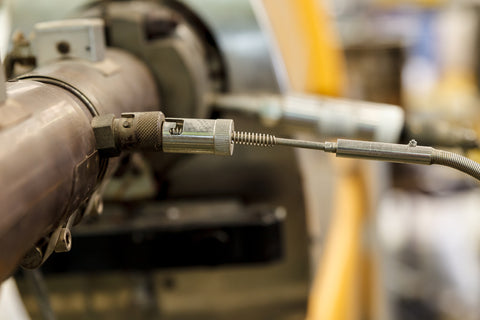Unraveling the Mysteries of PSI in 55-Gallon Drums
The fascination with 55-gallon drums spans a range of industries, from water storage to complex industrial processes. Understanding how much pressure these containers can hold and the dynamics of water pressure release is crucial for safety and efficiency. This article delves into the mechanics behind the PSI capacity of these drums and how to calculate the pressure of water they release, providing valuable insights for both industrial and DIY projects.
The Basics of Pressure and 55-Gallon Drums
Pressure, defined as the force per unit area applied in a direction perpendicular to the surface of an object, is a key concept in understanding the capacity of 55-gallon drums. These containers, whether made of sturdy steel or durable plastic, are designed to withstand certain pressure levels without failing. The distinction between a steel drum and a plastic drum lies in their material strength and pressure tolerance, affecting their applications and pressure handling capabilities.
Steel drums, owing to their material strength, are often preferred for storing substances that require a higher level of pressure stability. These drums are capable of withstanding significant stress without deforming, making them ideal for industrial applications where safety and durability are paramount. On the other hand, plastic drums, while versatile and resistant to corrosion, have a lower pressure tolerance. This makes them suitable for storing and transporting less volatile substances.
The design of the drum also influences its pressure-handling capabilities. Features such as thicker walls, reinforced ribs, and specific types of closures can enhance a drum's ability to withstand higher pressures.
How Much PSI Can a 55-Gallon Drum Hold?

The PSI (pounds per square inch) a drum can hold is not just a matter of material and design; it's also about the safety mechanisms in place. Pressure relief valves, for example, are crucial in systems where over-pressurization is a risk. These valves automatically release pressure once they reach a certain threshold, thereby preventing potential drum failure or hazardous situations.
A pressure gauge will be pivotal in real-time pressure monitoring inside the drum. This allows for proactive management of pressure levels, ensuring they remain within safe limits. Using a pressure relief valve set, which includes both a valve and a gauge, is a common practice in industries where precise pressure control is necessary. To help you monitor any pressure increases or pressure decreases within the vessel will help you maintain the appropriate pressure needed for your project.
Calculating Water Pressure in a 55-gallon Barrel
When filled with water, the pressure within a 55-gallon barrel is determined by the height of the water column. This is a straightforward calculation, but the implications for safety and functionality are significant. Understanding the water pressure is essential for system design and the drums' safety in applications like a hot water tank.
Managing water pressure is critical in systems where drums serve as reservoirs for shop air or are part of a sump pump setup. The sump pump, for example, relies on accurate water level and pressure readings to function correctly, preventing overflow or underperformance in drainage systems.
How much pressure can a barrel take?
The pressure a barrel (or drum) can withstand depends on its material (steel or plastic), design, and any modifications (such as reinforcements or pressure relief mechanisms) it may have. Generally, steel drums can handle higher pressures compared to plastic ones. Manufacturers often specify a drum's maximum pressure rating. Still, as a general rule, standard steel drums can safely withstand pressures up to around 5 to 7 psi before needing a pressure relief valve to release excess pressure. High-performance drums designed for higher pressure may withstand significantly more, but specific ratings should always be consulted.
The Impact of Heat on Water Expansion in a Closed System and Its Effect on Pressure
When heat is applied to a closed system containing water, such as a 55-gallon drum, the water undergoes thermal expansion. This phenomenon is due to the increase in water molecules' kinetic energy, causing them to move more vigorously and occupy more space. In a closed system, this expansion has nowhere to go, leading to an increase in pressure within the container.
The relationship between temperature, volume, and pressure in a closed system is governed by the principles of thermodynamics. As the temperature of the water increases, its volume expands. However, since the water is in a closed system (like a sealed 55-gallon drum), the expanding water exerts greater force against the walls of the container, leading to a rise in pressure. This principle is crucial in understanding how systems like hot water tanks operate and why safety measures such as pressure relief valves are indispensable.
Pressure relief valves are designed to mitigate the risk of over-pressurization in such systems. As the heated water expands and pressure builds to potentially dangerous levels, the valve automatically opens at a preset threshold, allowing some of the water or steam to escape. This release lowers the internal pressure, safeguarding the integrity of the container and preventing potential ruptures or explosions that could occur if the pressure were allowed to build unchecked.
The effect of heat on water expansion in a closed system exemplifies the delicate balance between temperature, volume, and pressure. It underscores the importance of understanding thermal dynamics in designing and managing systems that involve heating water within confined spaces. Properly calibrated safety mechanisms ensure these systems can operate safely and efficiently, even under conditions of significant thermal expansion.
Practical Applications and Safety Measures
The practical applications of 55-gallon drums are vast, ranging from hot water storage in tanks to acting as crucial components in air pressure systems. The integration of a garden hose for water transport or the use of the drum with a sump pump exemplifies the drum’s adaptability to different pressure-related needs.
In each of these applications, safety is paramount. Pressure relief valves and gauges ensure that drums operating under pressure, whether from hot water in a tank or compressed air for shop use, do not exceed their designed pressure limits. This not only protects the drum and its contents but also ensures the safety of the surrounding environment and personnel.
Moreover, as the pressure within a drum increases, safety measures become even more critical. For steel drums, which can serve as pressure vessels in more demanding applications, the design and implementation of these safety features must adhere to stringent standards to prevent accidents.
In conclusion, whether storing water, air, or any other substance, the management of pressure within 55-gallon drums is a complex interplay of physics, engineering, and safety protocols. From the basic understanding of pressure and its effects to the practical applications and safety measures in place, each aspect contributes to the safe and efficient use of these versatile containers.
DIY Projects and Community Insights
The DIY community often embarks on projects utilizing 55-gallon drums, from simple water storage solutions to complex pressurized systems. Online forums serve as a treasure trove of information, where enthusiasts share projects, tips, and cautionary tales. Engaging with these communities can offer invaluable practical advice and innovative ideas tailored to specific needs.
The Role of Equipment in Managing Drum Pressure
Equipment such as a sump pump or dip tubes plays a significant role in managing the pressure within drums, especially in systems involving liquid transfer or air compression. The proper selection and maintenance of pumps, alongside strategic air management, are key to optimizing the performance and safety of pressurized drum systems.
Common Questions and Concerns
Over-pressurization is a common worry, often discussed in forums as a "bad idea" due to the potential hazards it presents. Understanding the distinction between a fully filled and an empty barrel is crucial in pressure management, with the former posing greater risks if not properly monitored and controlled.
How much can a 55-gallon drum hold?
A 55-gallon drum can hold up to 55 US gallons of liquid. This equates to approximately 208 liters. The actual capacity might vary slightly depending on the drum's design and manufacturer specifications.
What is the pressure in a drum of water?
The formula used to calculate the general pressure in a barrel is P= F/A, where P equals pressure, F represents the force applied to the barrel, and A represents the area of the barrel. The pressure at the bottom of a drum filled with water depends on the height of the water column inside the drum. Pressure increases with depth due to the weight of the water above pushing down. The formula to calculate this pressure is P=ρgh, where P is the pressure, ρ (rho) is the density of the water (approximately 1000 kg/m³), g is the acceleration due to gravity (9.81 m/s²), and h is the height of the water column in meters. For a 55-gallon barrel full of water (which is about 0.875 meters tall), the pressure at the bottom can be calculated using this formula.

How many pounds is a 55-gallon drum of water?
The weight of water in a 55-gallon barrel can be calculated by multiplying the volume of water by its density. A gallon of water weighs approximately 8.34 pounds. Therefore, a 55-gallon drum of water would weigh 55×8.3455×8.34 pounds, which equals approximately 458.7 pounds. This calculation does not include the weight of the drum itself, which would add to the total weight. Given the density of the material the weight can change drastically, for example, a 55-gallon barrel of honey would have a very different weight than a 55-gallon barrel of oil.
Mastering Pressure: Safeguarding and Optimizing Drum Use
Understanding the pressure dynamics of 55-gallon drums is essential for anyone looking to utilize these containers safely and effectively. Whether for industrial use or DIY projects, the knowledge of how to calculate and manage the pressure they can hold ensures optimal performance and safety. Engaging with expert communities and adhering to safety guidelines can further enhance the utility and longevity of these versatile containers.







